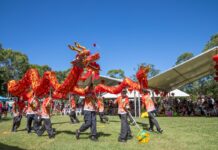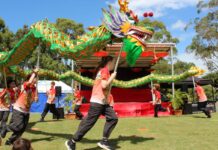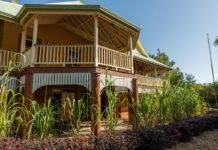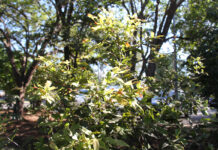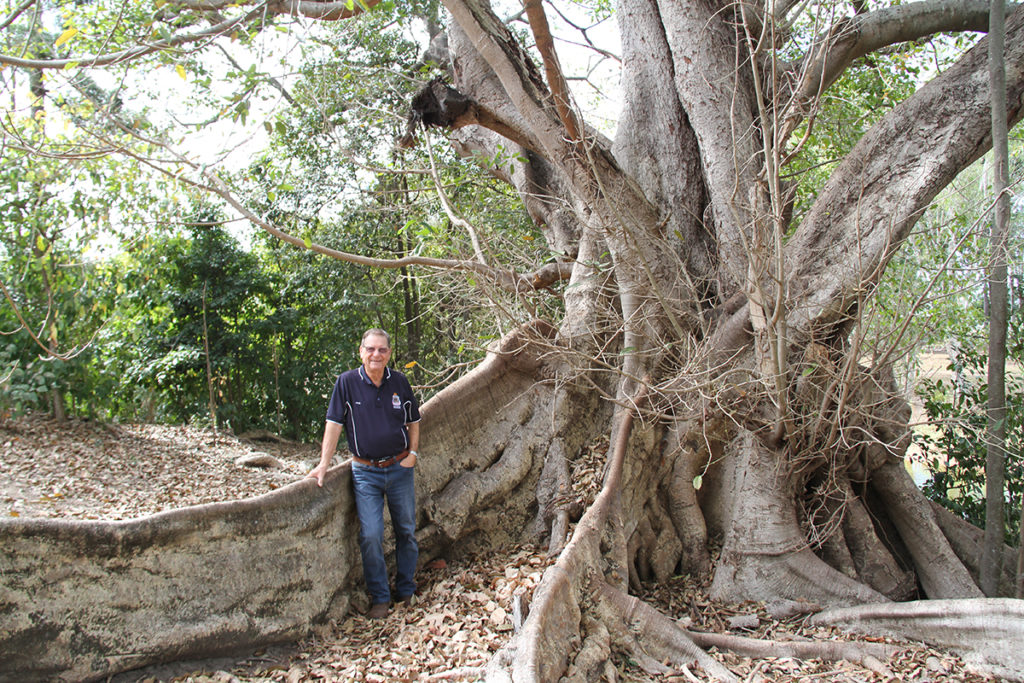
The well-maintained lawns of the Bundaberg Botanic Gardens don’t reveal its history as a dairy farm but Paul Trammachi remembers well the time he spent there as a boy.
Sitting in the Fairymead House gazebo Paul looks fondly over the area which, for about eight years, was his family’s farm.
“My father, after our cordial factory burnt down over in East Bundaberg …. in 1954/55 he bought this dairy farm which includes the Botanic Gardens as a lease,” Paul said.
“But we were here from 55 to 63 and I grew up here in those formative years, from when I was 9 or 10 to through most of my school years.
“We were fairly boisterous,” he laughed.
“Hardly a tree on the place here that’s the difference you can see from looking at it a long time ago.
“It was a farm and farms don’t grow trees in those days.”
Paul’s parents Tony and Doreen purchased the land from Neils Larsen and, along with brothers Ron and Mick and sisters Kathleen and Mary, the Trammachi’s became “townie” dairy farmers.
Paul has vivid memories of how the Botanic Gardens was
He can recall times when the now pristine Fairymead House lawns were covered in fungi.
“The first memories I suppose – mushrooms.
“The place would just be full of mushrooms every time it would rain especially over here on the flat of the Botanic Gardens.
“During a rain period there would be 30, 40, 50 people going all over this farm and would get buckets and buckets and buckets of the most beautiful mushrooms you’ve ever seen.”
The lakes, which are now filled with bird and fish life, were much closer to a swamp when it was Paul’s stomping grounds.
“There was always water in these lakes you see here now even though they were always covered with hyacinth, but the water was always there.
“All it had in it was big eels because they’re the only ones that could breathe under there properly or in that environment underneath.
“It was so thick that up until I was about 14 to 15 I could crawl over the top of it with six to seven feet of water underneath it.
“The council have done a great job of beautifying the place, but it was a swamp.”
While the Botanic Gardens is now full of families on any given day in Paul’s time it was rife with slithering critters.
“We used to, in a matter of a couple of hours, we’d go around these swamps and we’d have a bag of snakes – three or four different types.”
The renowned snake charmer Ram Chandra would visit once a year and Paul said he and school chum Paul Farmer were always willing to help him find more.
“His job was going around Queensland and of course he was a great milker of venom.
“He would’ve saved thousands of lives over the period of the material he got. He was a character, well and truly a character.
“He used to put an ad in the paper every time he came here: Wanted, Snakes.
“We’d get a sugar bag full or half full anyway.”
The pair received $10 for their work and Paul remembers being amazed at the bold way Ram Chandra would reach for the snakes.
Historical fig tree camp site of Bundaberg’s last swaggie
The towering, historical fig tree adjacent to Fairymead House holds some of Paul’s fondest memories.
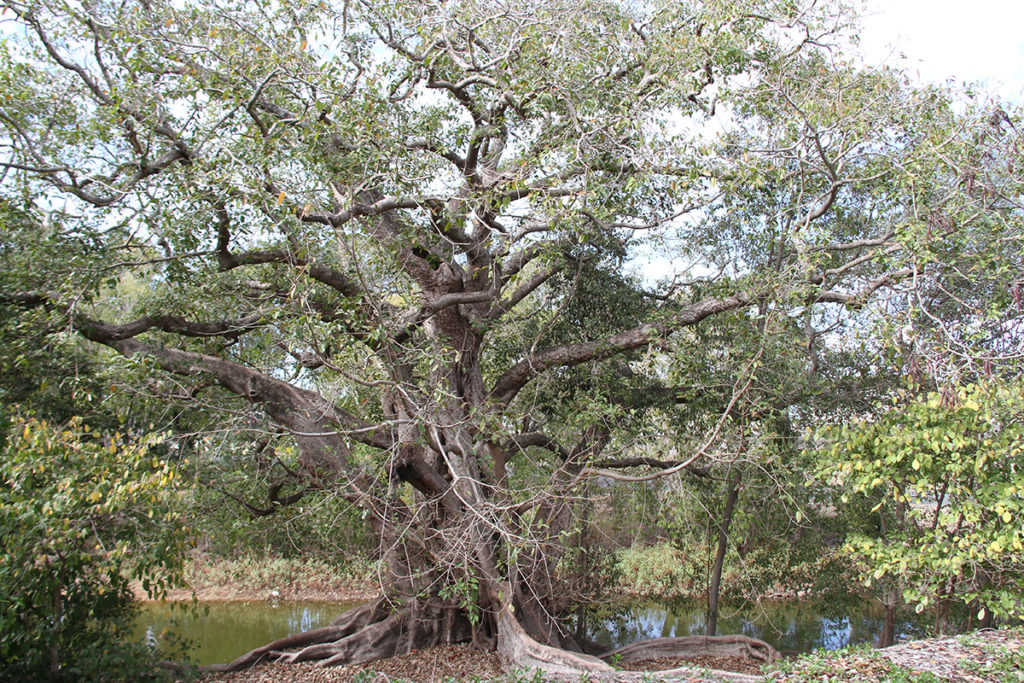
It was his childhood fort, making him the envy of all his school friends, and is also the location where Paul believes he may have seen Bundaberg’s last “swaggie”.
He estimates the tree would be about 500 to 600 years old.
“Well it’s the same size as it was then, which is now 60 years.
“So I think it’s been mature for a very, very long time.
“There were kids all over the place, all over this area and we had a swing and it was a beauty.
“It was 30 feet of rope and chain.”
Because of the heavy hyacinth infestation, Paul had to “borrow” his dad’s tractor to clear a swimming hole for the swing.
“One day, I hadn’t been honest to dad, I threw a railway line on … we’d throw that over and it’d sink and I’d drag it out with the tractor so we dragged about 30 meters wide by 20 meters the other way and that was our swimming hole.
“What was in there was great big eels – the girls wouldn’t go in there.
“By the time you got to the end up the top of the swing that’s where we’d cleared it that’s 15/18 feet up.
He said in summer he would come home from school to find 15 to 20 children waiting to enjoy the swimming hole.
But on several occasions Paul said there had been a visitor of a different kind at the fig tree.
“Mid-winter in 1956 along came the swagman,” Paul said.
“He came there for three years and how long he’d been coming for previously we don’t know but certainly when he got here he just knew what he wanted to do.
“He went straight there and all he would say is that he’s going north for the winter and he’d stay here for a week, 10 days and then he’d be gone.
“For the next three years we fed him and groomed him, he was no fool.”
The swaggie camped between the roots of the historic fig tree with one area for sleeping and another for cooking.
“My brother Mick and I myself would supply wood gathered from the farm and, of course, plenty of milk from the dairy.
“Kathleen and Mary would ‘spirit’ granny smith apples, bread and scones to the old man.
“Occasionally I would shoot a fat, wild duck for him to cook so he was well fed during his stay in Bundaberg.”
Paul said he never saw the swagman again after those first three years but he thought he was possibly the last to ever travel through Bundaberg.
“1958 was the last time we ever saw that traditional swagman carrying only the barest essentials such as a rolled swag, a billy and a few personal items.
“The swagmen you know there weren’t too many around after the war.
“In the 1920s and the depression … most of them were about because they couldn’t get work and just lived off the land wherever possible.”
Love of land lives on
Paul’s memories of the farm which had encompassed the Botanic Gardens were so fond that he and wife Annette purchased the property themselves in 1989.
“We continued dairying until the mid ‘90s until the urban sprawl swallowed it up.
“We have retired on the remaining eight acres of the farm.
“We pass the giant Moreton Bay fig tree every day which triggers many different memories of the way we were.”


